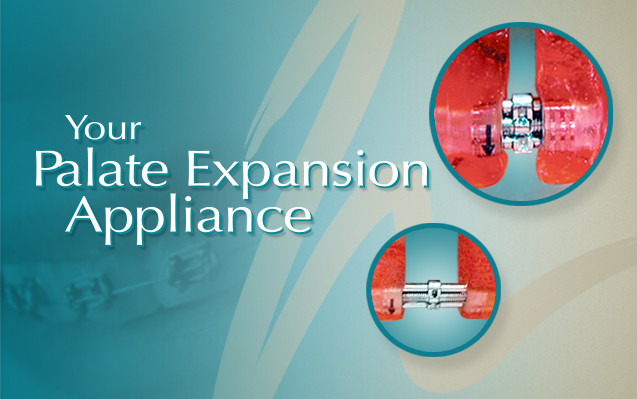Orthodontic Palatal Expander for Teeth
The palatal expansion appliance custom fits to your mouth to help widen the upper teeth. Cemented to the upper side teeth, the palate expander fits comfortably to create space for crowded teeth and correct a cross bite of the back teeth.
Benefits of a palate spreader and expander
Palate expanders can help correct a :
- Crossbite of the back of the teeth
- Overcrowding of the front teeth
- Improves the width and appearance of the smile
- Improve breathing through the nose
- Improves breathing if the nasal passages are blocking airflow due to a narrow or deep upper jaw
Expanders for teeth will create more space for the teeth to grow in correctly and give them the smile they deserve.
FAQ’s about palate expanders
Is the expander removable?
No, the orthodontic expander will stay in during the expansion procedure and for a three-month stabilization period following the expansion. Most patients will have the palate expander in place for four to six months.
Will I become accustomed to the expander?
Yes, however, it typically takes 24-48 hours to become comfortable with your new expander.
How does it work?
The orthodontic expander has a center screw that works in a similar fashion as a car jack. In fact, it is sometimes referred to as a “Jack-Screw”. Turning the screw causes the appliance and the upper dental arch to widen.
Does the teeth expander hurt?
While the placement of the palate expander will be uncomfortable, the actual turning of the screw should not hurt. If the expander ever causes pain when it is turned, immediately stop turning and contact our office.
What should I expect to see with my expansion appliance?
In younger patients, a space may develop between the two upper front teeth. This is normal and means the palatal appliance is functioning correctly. This space can sometimes get quite large, as much as 7mm, and is an indicator of a good result. Please do not be alarmed by the space, it is temporary, and will start to close as soon as the expander is fully opened.
In older patients, spacing of the front teeth is possible, but it is rarely seen. If spacing does occur, it is usually only 1-2mm. Sometimes the side teeth (where the expander connects) will tip outward toward the cheek.
Most expansion cases are “over-treated”. This is to allow for relapse after the expander is removed. Relapse is a fact of orthodontic life, and our experience shows the best way to treat and deal with relapse is to over-correct. Because of over-correction, the upper teeth may have the appearance of being “too wide” immediately following the expansion procedure. Please do not be alarmed as this is a temporary condition.
What are the potential problems?
As previously noted, if the expander is turned too quickly, excessive pressure can result, which may cause pain or discomfort.
What should I do if I’m having palatal expander pain?
1. Stop turning immediately.
2. If the pain or pressure does not resolve within an hour, try taking a turn off the appliance. This is done by inserting the key in the back of the appliance and turning forward. If done properly, this will almost always resolve the pain.
3. Call one of our four office locations for an appointment to evaluate the palatal expander before placing any additional turns.

